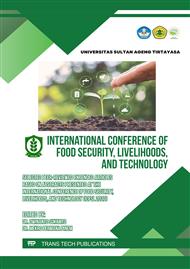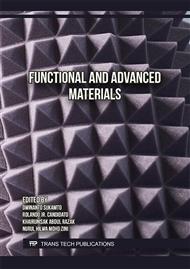p.79
p.89
p.97
p.105
p.113
p.125
p.133
p.141
p.169
Analysis of the Effect of an Absorbent Plate Coated with Cuo Nanoparticles on Single Slope Solar Distillation
Abstract:
Water is one of the basic needs that must be fulfilled by living things, especially humans, starting from daily activities such as cooking, washing, and so on. It is possible that the water source has been contaminated with other contaminants. Various methods are used to obtain proper water, one of which is the solar distillation method. Solar distillation is a method of purifying water that has not been widely used due to its low productivity. Copper Oxide Nanoparticles (CuO) were chosen as the material to be added to the black paint on the bottom of the distillation basin, this was done to increase its productivity. Experiments were carried out with concentrations of copper oxide (CuO) nanoparticles by weight of 10%, 15%, and 20%. It was found that adding nanoparticles to the paint increased the heat transfer rate and water temperature. The results obtained showed that CuO nanoparticles increased efficiency by 6.66%, 16.91% and 27.93% compared to conventional distillation apparatus at concentrations of heavy fractions of 10%, 15% and 20%, respectively. From this modification of the tool, the highest condensate mass was obtained at the concentration of the heavy fraction of 20% CuO nanoparticles with an average of 806 ml/day, while the other variations obtained an average condensate mass of 512 ml/day and 655 ml/day at the concentration of the heavy fraction respectively. 10% and 15% respectively.
Info:
Periodical:
Pages:
113-123
Citation:
Online since:
October 2023
Authors:
Keywords:
Price:
Сopyright:
© 2023 Trans Tech Publications Ltd. All Rights Reserved
Share:
Citation:



